Role Ice hockey player Siblings Odie Cleghorn Name Sprague Cleghorn Career start 1909 | Playing career Weight 86 kg Shot Left Height 1.78 m | |
Born March 11, 1890Montreal, QC, CAN ( 1890-03-11 ) Played for NHARenfrew Hockey ClubMontreal WanderersNHLOttawa SenatorsToronto St. PatricksMontreal CanadiensBoston BruinsCAHLNewark Bulldogs Similar People Odie Cleghorn, Guy Carbonneau, Claude Julien, Zdeno Chara, Michel Therrien | ||
Canadian profiles sprague cleghorn
Henry William Sprague "Peg" Cleghorn (March 11, 1890 – July 12, 1956) was a Canadian professional ice hockey player from Westmount, Quebec who played 17 professional seasons between 1911 and 1929 for the Renfrew Creamery Kings and Montreal Wanderers in the National Hockey Association (NHA) and the Ottawa Senators, Montreal Canadiens and Boston Bruins in the National Hockey League (NHL). He was a member of three Stanley Cup championship teams, winning with the Senators in 1920 and 1921 as well as with the Canadiens in 1924. His brother Odie was also a professional player and the two played several seasons together.
Contents
- Canadian profiles sprague cleghorn
- Early playing career
- NHL career
- Post retirement career
- Playing style
- Personal life
- References
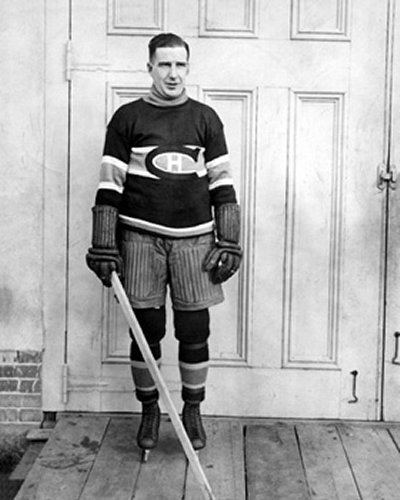
A tough and physical defenceman, Cleghorn had a reputation for violent play; he was twice charged with assault following on-ice incidents and was subject to efforts to have him banned from the NHL. His reputation made him an effective defender, and he used his offensive skill to become one of hockey's first offensive defencemen. At the time of his retirement, Cleghorn's 169 career goals were second most in professional hockey history by a defenceman, behind Cyclone Taylor's 181. He was inducted into the Hockey Hall of Fame in 1958.
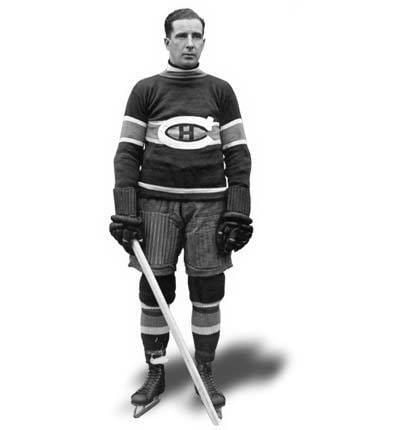
Early playing career
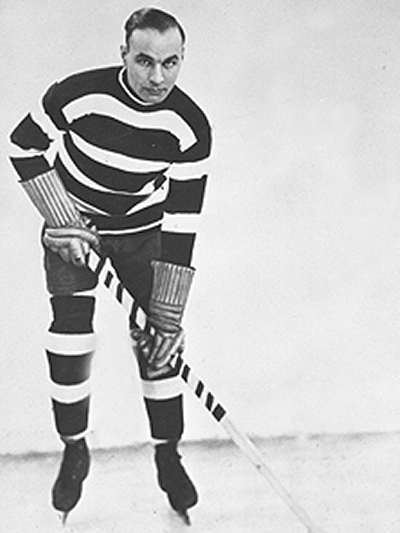
Cleghorn was born in the Westmount area of Montreal in 1890, a son of William John and Harriet Isabella (née Ogilvie) Cleghorn. Growing up in Montreal, he attended Westmount Academy and would play on junior and amateur teams until 1909. In the 1909–10 season, he played for the New York Wanderers of the United States Amateur Hockey Association and registered seven goals in eight games. Having been scouted by the Renfrew Creamery Kings in the National Hockey Association (NHA), he was signed to a contract, along with his brother Odie, to play with them for the 1910–11 NHA season. Sprague appeared in 12 games, scored five goals and registered 27 penalty minutes. During the season, he also made the conversion from the position of winger to defence, as his coach, Alf Smith, felt his presence was better in that position. Cleghorn still enjoyed rushing the puck forward and developed into an offensive defenceman. The Cleghorn brothers moved to the Montreal Wanderers in 1911–12, where both spent the next six seasons. With the Wanderers he established a reputation that he would later be most remembered for, that of a fierce competitor with an explosive temper. He was also an offensive leader for the Wanderers; Cleghorn frequently carried the puck the length of the ice surface to generate scoring chances: in a 1913 game he had a five-goal game against the Toronto Ontarios, and during the 1914–15 season he led the NHA with 12 assists as part of a career year in which he also scored 21 goals. Cleghorn would often violently retaliate to opposing players he felt were taking liberties on his teammates, especially his brother Odie. One particular incident in 1912 saw him strike opposing player Newsy Lalonde in the back of his head after the latter had cross-checked Odie. This resulted in a fine and suspension from the league. He also faced a charge of aggravated assault for which he paid a $50 fine. In a January 1917 game against the Toronto Blueshirts, Cleghorn collided with Ken Randall, which subsequently led to a violent foot-first collision with the boards. He sustained a broken ankle that ended his season. While recovering from his injury later in 1917, Cleghorn suffered another fall while walking an icy street in Montreal and fractured his other ankle. The injuries forced him to miss the entire 1917–18 season, and cast doubts on his future in hockey.
NHL career
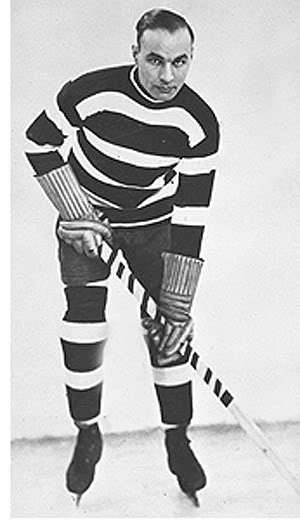
After the Montreal Arena burned down in 1918, Cleghorn's rights were claimed in a dispersion draft of the Wanderers team by Ottawa Senators general manager Tommy Gorman, who had also paid for Cleghorn's transportation to Ottawa. After recovering from his leg injury, he played for the Senators in 1918–19 and registered 13 points in 18 games. The next season, he played on a defensive pairing with Eddie Gerard and scored 21 points in 21 regular season games, as well as one point in five playoff games. That season the Senators went on to win the Stanley Cup, defeating the Seattle Metropolitans. In an attempt at league parity, the NHL transferred him to the Hamilton Tigers in December 1920, but Cleghorn refused to report. The Senators asked that he be allowed to return to their team, for which George Kennedy, owner of the Montreal Canadiens, threatened to have Ottawa thrown out of the league. Cleghorn eventually signed with the Toronto St. Patricks, playing with them for the regular season in which the team won the NHL's second half championship. With the management growing discontent with his play, he was eventually released from the club in March after the St. Pats lost their play-off. He returned to Ottawa during their playoff series in time to be a member of the 1921 Stanley Cup-winning team. The league again attempted to transfer Cleghorn to Hamilton in 1921, but he again refused to report. Just before the start of the 1921–22 NHL season, Hamilton traded him to the Montreal Canadiens for Harry Mummery and Amos Arbour.
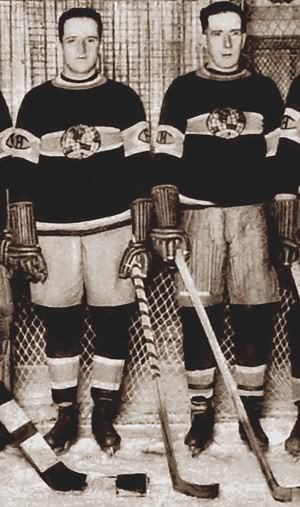
With the Canadiens, Cleghorn was reunited once again with his brother, Odie. In his first season with the Canadiens, he scored 17 goals and nine assists for 26 points in 24 games. Towards the end of the season, he would also be named captain of the team. For the next three seasons, the Canadiens made the Stanley Cup playoffs three consecutive times. He played alongside Billy Coutu, and the pair established a reputation as one of the most feared defensive parings in the league. In a 1923 playoff series, against his former team, the Ottawa Senators (who he had grown to despise), Cleghorn struck Ottawa Senators defenceman Lionel Hitchman in the head with his stick. Later charged with aggravated assault, he was found guilty and fined $50. The incident also enraged Canadiens owner, Leo Dandurand, who suspended him from the roster for the remainder of the playoffs. In a separate incident versus the Senators in 1922, he initiated a brawl during which he injured three players: Eddie Gerard, Frank Nighbor and Cy Denneny. This led to an attempt by the Ottawa management to expel him from the league, and a referee to describe him as a "disgrace to the game". In the 1923–24 season, the Canadiens won their first Stanley Cup in the NHL era. It was the third championship of Cleghorn's career. After the following season, Montreal sold him to the Boston Bruins for $5000. He played out the following three seasons with the Bruins until his retirement in 1928. Cleghorn acted as the unofficial captain of the Bruins between 1925 and 1927, and in his final season with the Bruins, 1927–28, also served as an assistant coach. During his time with the Bruins, he served as a veteran presence on the team, as well as a mentor to future Hall of Fame defenceman Eddie Shore.
Post-retirement career
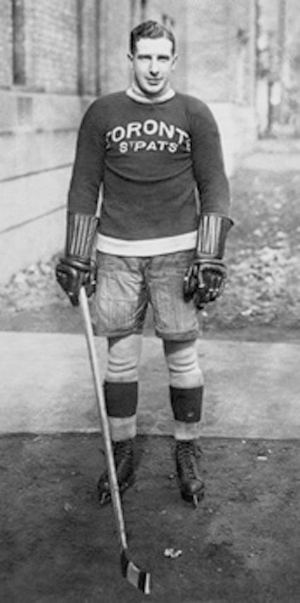
After his retirement, Cleghorn took to coaching. He first found a job with the Newark Bulldogs of the Canadian-American Hockey League (CAHL) where he acted as a player-manager from 1928 to 1929. During his time with Newark, Cleghorn acquired his former Montreal teammate, Billy Coutu, to play for the team for the season as his defensive partner. A newspaper at the time stated that the move "reunit[ed] the most formidable defence that ever played hockey". Later, he coached the CAHL's Providence Reds in the 1930–31 season. The following year, he was named head coach of the NHL's Montreal Maroons for the 1931–32 season. That season, the team racked up 19 wins and 22 losses, for third in the Canadian Division and a spot in the Stanley Cup playoffs. The team would advance to the playoff semifinals where they were eliminated by the eventual champion Toronto Maple Leafs.
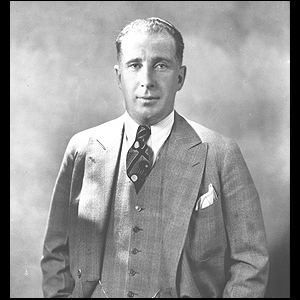
Cleghorn was hired in 1935 by the Pittsburgh Shamrocks of the International Hockey League (IHL), but was fired by the team near the end of his first season over a dispute with club president Ray Babcock over the payment of his salary. He was replaced by Albert Hughes, the team's captain, for their 11 remaining games. According to media reports, Cleghorn refused to leave with the team for a game in Windsor because he claimed that the team had not been paid three days earlier. However, the Shamrocks' ownership stated that the reason Cleghorn did not accompany the Shamrocks team on their trip, was because he had to be disciplined for "misconduct covering the past month". On March 14, 1936, Cleghorn filed a lawsuit against the Shamrocks ownership, claiming that he was owed $1,420.50 by the club. The ex-coach claimed that he was owed $420.50 in salary since March 2, and a $1000 bonus, covered by his contract. His final coaching stint was with the Cornwall Cougars of the Quebec Provincial Hockey League. He was appointed to the position September 30, 1947, and served for a little over a month. After his team went winless in their first six games and having just suffered an 11-0 home defeat, he was fired on November 14.
Playing style
Known for both his intense competitive nature and violent temper, Cleghorn was considered one of the toughest and dirtiest players of his time. Respected by his teammates and hated by his opponents, Cleghorn frequently used his stick as a weapon and was routinely among his team's leaders in both goals and penalty minutes. He claimed to have been involved in at least 50 incidents during his career in which a player left the ice on a stretcher. In the season which Ottawa unsuccessfully attempted to have him banned from the NHL, Cleghorn led the league in penalty minutes with 80. According to some accounts, Evelyn Byng, Viscountess Byng of Vimy, was so mortified by Cleghorn's style that she donated the Lady Byng Trophy to the NHL in 1924 in a bid to encourage more sportsmanlike play.
Cleghorn's physicality made him a feared defender away from the puck and he was regarded as one of his era's top defencemen. His ability to rush the puck forward also made him a scoring threat; Cleghorn was one of hockey's first offensive defencemen. He once scored five goals in an NHA game in 1913, and had a career best 21 goals in 19 games in 1914–15. He retired in 1928 with 169 career goals, at the time the second most by a defenceman in professional hockey history behind only Harry Cameron. The Hockey News ranked Cleghorn as the 88th greatest player of all-time in its 1998 book, The Top 100 NHL players of All-Time. He was inducted into the Hockey Hall of Fame in 1958.
Personal life
On May 8, 1911 at New York, Cleghorn married Evelyn Irene Mabie, whom he had met whilst playing with the Wanderers. He was arrested in 1918 for beating his wife with a crutch while he was recovering from his ankle injuries. The couple divorced in 1921, after Sprague was found by his wife with another woman after she had reported him as missing. Cleghorn was also ordered by a judge to pay an alimony of $1000 per month to his ex-wife. Cleghorn later remarried twice, with his second marriage also ending in divorce. His third wife, Vivian Goudreau, predeceased him on December 18, 1943.
Cleghorn was hit by a car on his way to work on June 27, 1956 on Montreal's Commissioners Street. He sustained head injuries and a fractured cervical vertebrae. Two weeks later, on July 12, 1956, he died of his injuries at St. Luc Hospital. He was 66, and was survived by his brother Odie as well as three sisters. His funeral was held at First Presbyterian Church in Montreal on July 14 and he was buried at Mount Royal Cemetery. Upon his death, his brother, Odie remarked, "He was my brother, and I don't like to boast, but I never saw a tougher or better defenceman than Sprague." Two days later, Odie died in his sleep of heart failure and was found by his sister just hours before Sprague's funeral.
